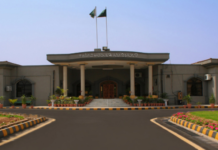Foreign Desk Report
NEW YORK: India’s illegal action in the occupied part of Jammu and Kashmir that it claimed would bring peace and development to the disputed region has in fact “only brought more violence and uncertainty,” according to an article published in ‘Foreign Policy’, a prestigious American magazine.
“Even during the coronavirus pandemic, when many conflicts have been on hold amid the United Nations’ call for a global ceasefire, New Delhi has intensified military operations in the region, striking out against Kashmiris separatists fighting for self-determination,” wrote Adil Amin Akhoon, managing editor of ‘Mountain Ink’ magazine based in Srinagar, and Sharafat Ali, a documentary photographer, in a joint article “In Kashmir, a Year of Exploding Memories”.
It was nothing new for the Indian illegally Occupied Jammu and Kashmir (IIOJK), which had long been considered the world’s most militarized zone, they wrote on the eve of the anniversary of India’s August 5, 2019, revocation of Jammu and Kashmir’s special status and its military siege of the disputed state that followed.
“Conflict in the region has been ongoing since 1947, when India and Pakistan gained their independence from the British and the brutal attendant partition left Kashmir a disputed territory between the two.” Reminding that two wars have since been fought over Kashmir, and countless skirmishes have taken place within the disputed territory itself, the article pointed out that varying groups of freedom fighters have fought for independence or a merger with Pakistan.
“Decades of clashes between Indian security forces and Kashmiri insurgents have hit civilians the hardest; forced disappearances, torture, rape, and a brutal response to protests have become a normal part of life,” the authors said. Between 1990 and March 2017, at least 41,000 people were killed, including some 14,000 civilians, and this year alone, at least 143 freedom fighters have been killed, with 62 deaths in June alone, according to a report by the Jammu Kashmir Coalition of Civil Society and the Association of Parents of Disappeared Persons. Civilians, too, are caught in the fighting, with 32 killed in the first six months of this year, it said. The authors, in their Foreign Policy article, then narrated the following heart-rending accounts, illustrated with photographs, of the atrocities committed by Indian occupation forces in Kashmir:
On June 26, a 5-year-old was killed in the crossfire between suspected militants and Indian paramilitary forces. A 65-year-old was killed on July 1 in northern Kashmir in front of his 3-year-old grandson. More than 50 homes have been destroyed or badly damaged over the past year. And of that count, as many as 22 of them were damaged on May 19.
Residents say the Indian tactics usually involve widespread harassment of ordinary citizens, who are frisked, questioned, and have their homes searched with little or no cause. A 12-hour fierce battle between Indian forces and Kashmiri militants involving guns and explosives left two militants dead in downtown Srinagar. Three civilians later died due to unexploded ordnance left in the area.
Days after the fighting, buildings still smoldered, and the smell of smoke was sharp in Nawakadal, Srinagar’s oldest neighbourhood. In the narrow lanes, some families were cleaning what little they could salvage from the ruins. Others had left without taking anything, their homes were completely gone.



